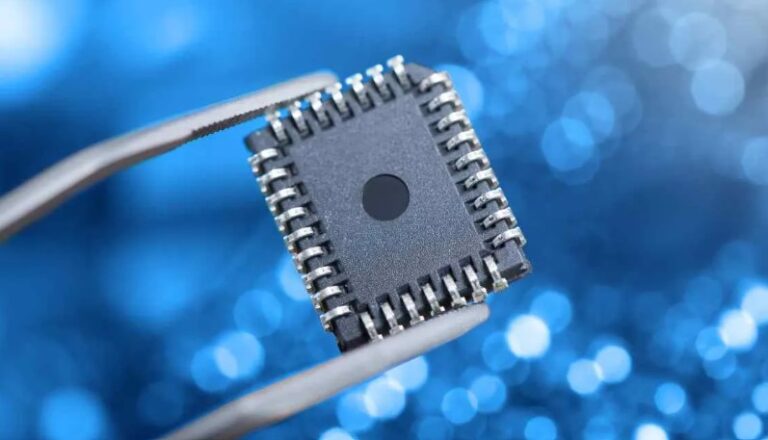Distorting the human body using highly sophisticated technologies in a fusion that is as dystopian as it is fascinating: biohacking is an emerging trend that combines technology and the human body to create “super-humans” with unthinkable capabilities. Even through the use of subcutaneous microchips.
We are not talking about the next sci-fi colossal coming to theaters, but rather about a reality much closer than we think, which is already the everyday life of thousands of people around the world.
In this article, we will explore the story of an Italian pioneer named Mattia – who is now living with his own biohacked body, analyze the process of manufacturing and implanting subcutaneous chips, and delve into the costs associated with this revolutionary practice.
Table of Contents
Mattia is already living with five subcutaneous microchips
Mattia Coffetti, a 35-year-old cybersecurity expert living in Bergamo, Italy, is one of Italy’s leading figures in the world of biohacking.
Fascinated by the philosophy of human improvement through technology, Mattia embarked on a courageous journey in 2019, deciding to undergo implantation of a series of subcutaneous chips in his body.
These chips, similar in size to a grain of rice, were designed to be inserted under the skin and were developed with technologies such as NFC and RFID to provide unique functionality.
Currently, Mattia has five implanted chips, some of which enable contactless POS payments and other interesting functions, demonstrating the enormous potential of this symbiosis between technology and the human body.
“By biohacking I mean anything that can improve our physical condition. It is a series of practices that address so many aspects. We are not just talking about technology. It ranges from diet to workout routines. It is related to the concept of transhumanism: using technology in symbiosis with the body to enhance our species.”
How subcutaneous microchips work
The production of subcutaneous chips is a sophisticated and highly specialized process. Companies involved in manufacturing these devices use biopolymers, biocompatible and hypoallergenic materials, to encapsulate the chips and protect them from the body’s environment.
The manufacturing laboratories are highly controlled, ensuring the safety and quality of the devices as they are implanted in the human body. It is essential that these chips are fully compatible with the body to prevent risks of adverse reactions or infections.
The purchase of sub-skin chips has become more accessible due to the rise in popularity of biohacking and the opening of specialized online marketplaces. Through authorized websites, biohackers can easily purchase these advanced devices to “enhance” their bodies and capabilities.
However, it is critical to pay attention to the source of purchase to ensure the safety and reliability of the chips, avoiding potential risks associated with counterfeit or unsafe products.
Walletmor, a U.K.-based Anglo-Polish company, is a pioneer in biohacking and offers customers the option of implanting subcutaneous microchips to perform various functions, including contactless payments.
Implanting subcutaneous microchips is a delicate process that requires appropriate medical skills. Many biohackers choose to use piercing studios or physicians with experience in subcutaneous chip implantation.
The procedure involves incising the skin and inserting the chip into the subcutis in strategic locations, such as the hands, where the amount of muscle tissue and vital organs is minimal. Because of the delicacy of the procedure, it is essential to seek qualified professionals to ensure the success and safety of the implantation.
Read also: A chip in the brain: what is Elon Musk’s Neuralink company that divides scientists
What functions can subcutaneous microchips have?
There are various types of subcutaneous chips with different functions, but the most common applications include:
- Identification: subcutaneous microchips can be used to uniquely identify an individual;
- Access control: they can act as “badges” for access to certain locations or for authentication in security systems;
- Medical monitoring: may contain essential medical information such as a person’s blood type, allergies, or chronic diseases. This information can be useful in emergency situations to provide timely medical care;
- “Wearable” technology: can be used as part of “wearable” devices to monitor physical activities, blood sugar levels, heart rate and other biometric metrics;
- Electronic payments: can be linked to payment systems to enable fast and secure transactions;
- Infection control: they can contain antibacterial coatings to help prevent infection after surgical implantation.
How much does a subcutaneous microchip cost?
The costs of subcutaneous microchips can vary depending on their complexity and the functions they perform. In the case of Mattias, who has five chips implanted, costs can range from 80 to 100 euros per implant.
This price includes both the cost of the subcutaneous microchip itself and the implantation surgery. However, it is important to note that costs can vary depending on the region in which the procedure is performed, the expertise of the professional performing the procedure, and the materials used to encapsulate the chips.
Subcutaneous microchips, however, represent only the tip of the iceberg in the vast world of biohacking, a practice that continues to evolve and challenge the limits of the human body-as we have already seen in the case of the smart band-aid capable of healing wounds in an increasingly thin line between the human body and technology.
Read also: Biometrics in the digital and AI era: a guide to its current and future applications












